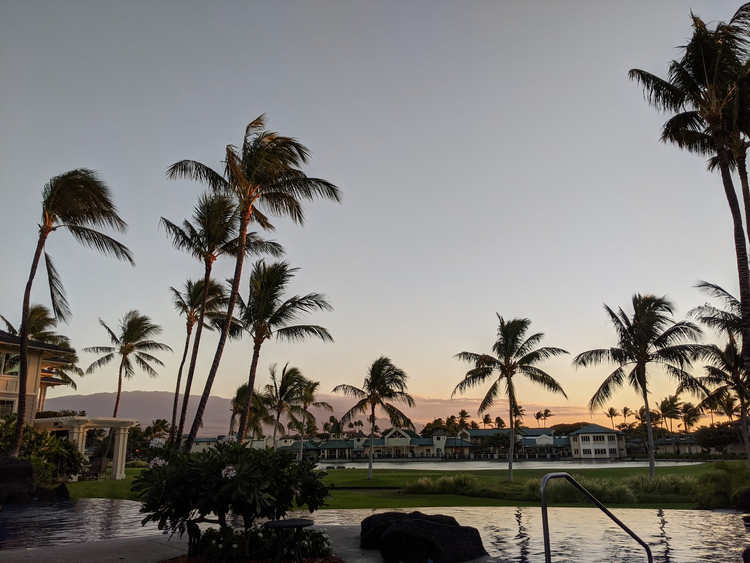My Sleep Routine - and How to Design Your Own
I hate telling people what to do. However, I always make an exception for sleep. Think you can get away with less than 7 hours of shuteye a night? Wrong.
Instead of sounding like a broken record, I'll just link you to my book notes on Matthew Walker's 'Why We Sleep'.

Let's talk about how I make sure to get enough sleep. Our modern environment isn't exactly conducive to sleep, so it takes extra effort to have great sleep hygiene.
Before we jump in, let's review some science. Understanding the two forces that drive sleepiness will make it easy to design your routine.
Circadian Rhythm and Sleep Pressure
Two forces drive how sleepy you feel:

*Chart from Matthew Walker's [Why We Sleep](/why-we-sleep)*
1. Circadian Rhythm
- A cycling day-night rhythm that makes you tired or makes you alert depending on the time of day
- Is internally generated, but can be shifted by exposure to light, activity, and meals
- Melatonin is generated in darkness
2. Sleep Pressure (Adenosine)
- The chemical adenosine builds up throughout the day, causing you to be sleepier the longer you stay awake
- Caffeine blocks adenosine receptors in the brain but does not prevent the generation of adenosine
- Adenosine levels can only be lowered by sleeping
Factors you can use to manipulate Circadian Rhythm:
- Sleep / Wake times
- Light
- Melatonin (exogenous)
- Exercise
- Food Timing
- Temperature
Factors you can use to manipulate Sleep Pressure:
- Duration of sleep
- Caffeine
While my sleep routine takes most of these into account, the primary factor I manipulate to improve sleep is light levels. I modulate light exposure to keep my circadian rhythm aligned with my daily schedule, ensuring I'm wide awake while working and winding down for sleep at night.
My routine for great sleep hygiene
A note on contexts: this routine works for me, my schedule, and my life. I provide it here as an example for you to work from, not as a target for you to aim for. This routine is idealized, I typically hit 75-85% of it. Somedays I completely miss the mark (see yesterday). Instead of copying it, try implementing a few of these ideas in a way that fits your own life.
Here's what a full day looks like for me:
Waking
I wake up at the same time every day using a light alarm. It gradually brightens like it's sunrise and makes chirpy bird noises instead of a blaring alarm. The alarm is expensive for what it is and the button locations are terrible. I also get confused when I hear the real bird that the alarm is based on. Despite its faults, it's so much better than waking up to a phone alarm that I'll put up with the weird buttons.
Like a good addict, I check Twitter for 5 minutes (more bright lights to the face) until my second alarm goes off. That's my signal to get out of bed, do the bathroom thing, and drink a glass of water. The water helps clear away any grogginess.
I commute by transit to work, which builds in an automatic 10-20 minutes spent outside in the sun first thing in the morning. I don't wear sunglasses on my commute. Getting light exposure first thing in the morning seems to have the biggest impact on my entire sleep routine—even more than avoiding screens at night. My understanding is that this light exposure is still beneficial even with cloud cover.
The commute takes about an hour but unlike my fellow portable mug toting passengers I don't drink coffee until I get to the office. Most people drink coffee to remove sleepiness, but caffeine is also useful for increasing focus and concentration. I'd rather generate wakefulness naturally and use coffee to increase peak concentration levels. More on caffeine timing here. For me, increasing attention while I'm riding the train doesn't accomplish much, so I don't drink coffee until I get to the office.
I'm fortunate to have a desk by a window, but because I'm living in Seattle, I'll be using a white light therapy lamp as soon as we stop seeing the sun.
Midday
Again, the goal is to get as much sunlight as possible. I'm a desk jockey living in cloudy Seattle, so this is harder than it sounds. I take 1-3 breaks a day to just walk around the block, or maybe a little further if I have time. Coffee consumption stops at least 10 hours before bed, usually sooner.
Evening
Time to head home. My commute also has 10-20 minutes spent outside in the sun, and if it's particularly nice out I'll walk the last leg instead of transferring to a bus.
I exercise 4-6 times a week, some of which is outdoors. Whenever possible I do my cardio and conditioning work outdoors. Exercise makes it way easier to fall asleep, but only if I leave a few hours between working out and bed.
As the sun sets, the goal changes. Instead of maximizing light exposure, now the aim is to reduce light exposure as much as possible. My computer starts filtering out blue light with a program called f.lux.
One-hour before bedtime
The thermostat starts to cool the bedroom, or if it's summer, I open the windows to let in cool air.
My phone goes from brilliant colors to grayscale, thanks to Android's 'Digital Wellbeing' Feature. This is my reminder that it's time to stop looking at screens and to start winding down. Apple users could instead set a 'bedtime' alarm to achieve the same goal.
I take a hot shower, which is relaxing, lets me clear my head, and helps lower body temperature for the evening.
Once out of the shower, I attach these fashionable orange plastic clip-ons to my regular glasses. Non-glasses wearers have plenty of equally fashionable options. They block blue light, which is the primary wavelength your body uses to adjust its Circadian Rhythm.

*So. Cool.*
My bedroom has blackout curtains, and any bright lights from chargers/electronics are hidden. I use a blindfold if my girlfriend is staying up later. Some people are annoyed by blindfolds which touch your eyelashes--look for “3D” eye masks with a space for your eyes.
8 hours before wake time, I'm in bed with my eyes closed, relaxed and ready to sleep.
Designing your sleep routine
Six steps for designing your routine:
- Consider your usual daily activities - work, meals, chores, exercise
- Set sleep-wake times that work for you
- Design routines that expose you to more light early in the day, and less at night
- Set rules around caffeine consumption
- Establish these new routines
- Adjust over time
Find other people's sleep routines and use them for inspiration. Consider additional tips below.
Weekends - avoiding social jetlag
Imagine flying from LA to NYC and back every single weekend. With the time zone difference, your circadian rhythm would be all out of sync. Your body would never be quite sure what’s happening: you’d be tired at weird times and have trouble falling asleep at others.
Guess what happens when you stay up late on Saturday, sleep in on Sunday, and get up early for work on Monday.
Keeping the same sleep/wake times throughout the week is difficult with social events and early work schedules. Rather than completely giving up on the idea, find ways to reduce your weekday/weekend "time zone" gap.
If you don’t get enough sleep during the week, extra sleep during the weekend helps but will not undo the damage. I prefer to maintain my wake times, and get a nap in for extra sleep on the weekend.
Partiers, aim to be mostly sober before going to bed. Alcohol inhibits REM sleep.
How to stop snoozing: practice!
If you have constantly snooze your alarm, you need to practice waking up with your alarm.
On a weekend, set aside half an hour, preferably in the morning. Change into your pajamas and set your alarm for 1 minute from now. Lay in bed just like you were sleeping, under the covers with the light off. You can even pretend to snore for fun. When the alarm goes off, get out of bed and stand up. Repeat 5-10 times. This kind of practice feels silly but is an effective way to reprogram your reaction to that morning alarm.
Things I don't use that might help your sleep hygiene:
Melatonin
Exposure to blue light can delay melatonin release, making it harder to fall asleep. Unfortunately, most melatonin pills are 10 to 30 times (not a typo!) higher dosages than needed to improve sleep. The correct dose is 0.3 mg. Anything more than 0.5 mg typically doesn't add any efficacy but does worsen side effects. This smaller 0.3 mg dose is also more in line with natural melatonin spikes. Consider trying melatonin if you have trouble falling asleep, but try to get pills with the smallest dose you can find, or buy a pill-splitter.
Notepad with pen
If you 'think too much' or worry about forgetting things while trying to sleep, keep a notepad near your bed. Write down whatever you're thinking about to get it out of your head.
Visualization
Another option for night time worriers: visualization. I call this one 'put it in a box'. Imagine yourself in a blank room, like in the matrix, with a big old wooden box next to you. Collect all of your thoughts, worries, and thoughts into a nebulous ball and stuff it into the box. Shut the box's heavy lid over your thoughts, and let the box drift away over the horizon.
What did I miss?
Did you get any ideas to incorporate into your sleep routine? What helps you get enough good quality sleep? Let me know!




Member discussion